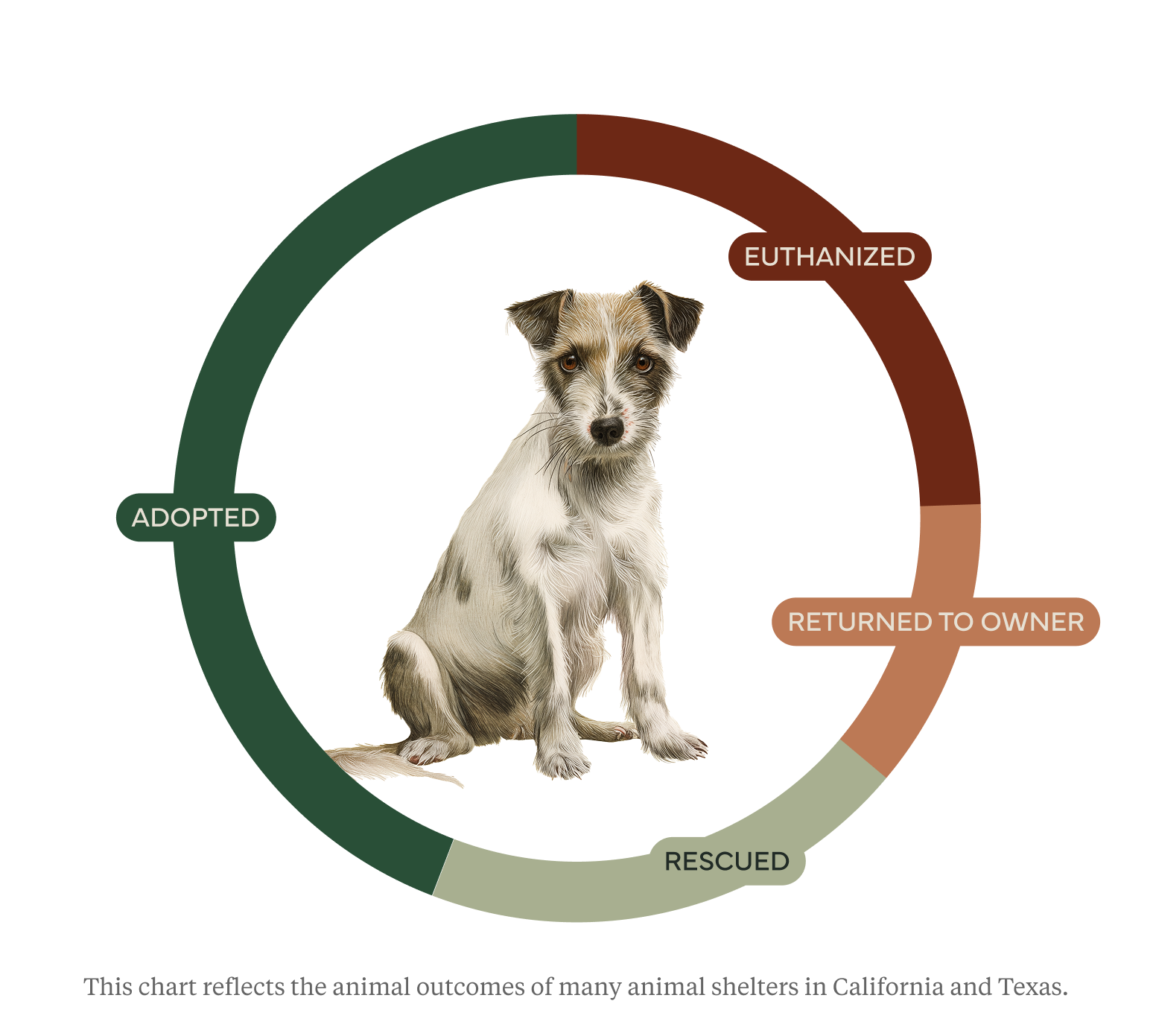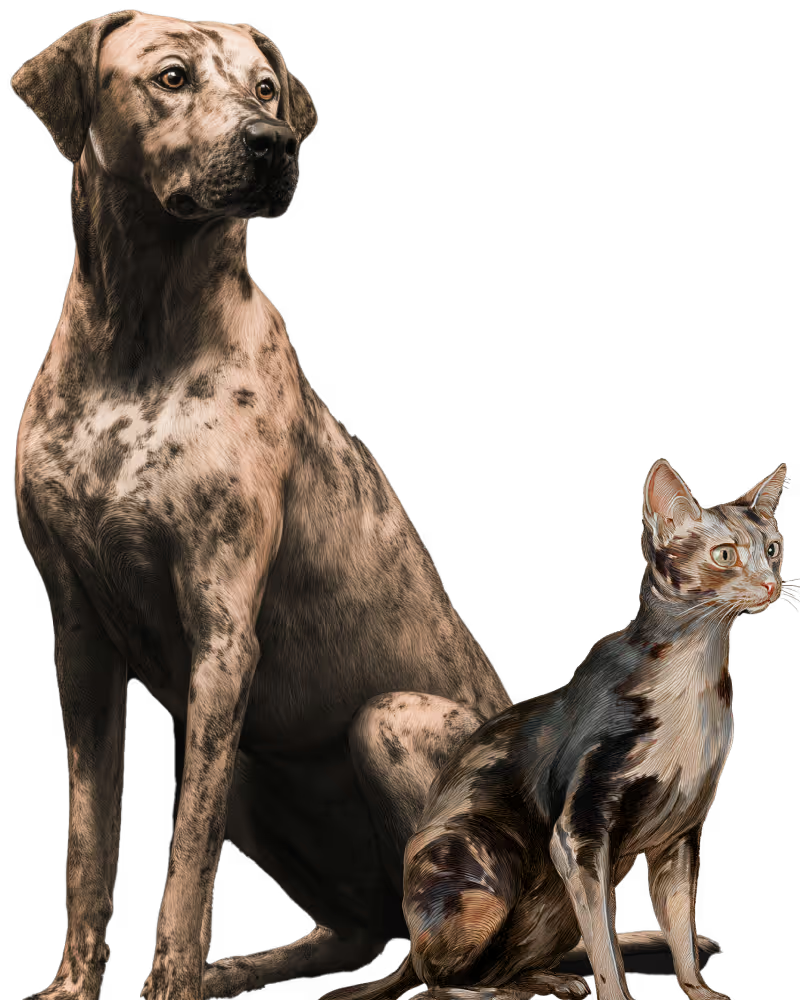Ending the pet overpopulation crisis
We have one mission: to end unnecessary shelter euthanasia and animal homelessness by addressing the root cause — pet overpopulation. We invest in creating access to high-quality, high-volume, low-cost sterilization through dedicated brick-and-mortar and mobile vet clinics, targeting communities where affordable vet care is limited or non-existent. Our investment will stop the crisis at the source and transform the trajectory of animal welfare for generations to come.
Caravita (Ca-ra-vi-ta) is derived from the Latin words “Carus”, meaning beloved or precious, and “Vita” meaning life. Caravita beautifully communicates our core belief that every animal’s life matters.
Understanding pet overpopulation
The numbers tell a devastating story: pet overpopulation is a national crisis. Every year, 6.3 million dogs and cats enter U.S. shelters, and more than 1 million adoptable animals lose their lives simply due to overcrowding. The truth is undeniable: adoption and rescue has reached a tipping point, and creating more shelters doesn’t solve the problem. Prevention is the only answer.
The shelter crisis only scratches the surface of the suffering animals experience – tens of millions of dogs and cats live in homelessness and survive on the streets, unseen and unsupported, often facing a cruel death. Due to a lack of comprehensive access to affordable spay and neuter services, this problem will only continue to grow at an exponential rate. Ending pet overpopulation is not just important – it’s the only way forward.
can become 486 animals in 5 years*
Transforming our shelters
Community access to low-cost spay and neuter services, vaccinations, and microchipping is a game changer for our shelters. These lifesaving services dramatically reduce shelter intake, creating opportunities for more dogs and cats to find homes and moving us closer to shelters being the safe havens they were intended to be. Keep reading to see how each of these strategies transforms shelter outcomes—and saves lives.

Nearly 1 in 4 animals in U.S. shelters are euthanized—not because they are unadoptable, but because shelters run out of space and resources and struggle with the spread of preventable illnesses. The most effective way to change this is by reducing shelter intake through accessible, low-cost spay/neuter and vaccination programs that target communities with the highest intake rates.
By reducing shelter intake through widespread sterilization, fewer animals will enter shelters—and those who do will be protected against common, contagious diseases as a result of low-cost vaccine programs. By providing access to these services at scale, euthanasia rates will decline.

Overcrowding is one of the biggest barriers to adoption. Shelters are packed far beyond their intended capacity, creating a stressful and overwhelming environment for both animals and visitors—not to mention unsanitary conditions. Stretched thin by the high daily intake and the number of animals already in their care, staff and volunteers struggle to provide the necessary care each animal needs. As a result, potential adopters can be easily deterred, negatively impacting adoption rates.
With lower intake, shelter staff and volunteers can provide higher-quality care for the animals and maintain calmer, cleaner environments for visitors. These improved conditions encourage more people to visit their local shelter, increasing opportunities for adoption. When intake rates are balanced with adoption rates, staff and volunteers can shift their focus to community programs such as trap-neuter-return (TNR) and shelter prevention strategies, such as food assistance. The result is clear: higher adoption outcomes and greater community impact.

Only 1 in 5 animals are microchipped when they enter a shelter, making it slow, difficult, and often impossible to reunite pets with their families. Countless animals with owners searching for them remain in shelters longer than necessary, taking up space and resources that could otherwise help animals truly in need. Low-cost microchip programs are essential to reconnect animals with their families quickly and reduce shelter crowding.
Through high-volume microchip drives and by microchipping every owned pet during spay/neuter procedures, we are creating a low-cost insurance plan for animals, which will have a positive impact on Return-to-Owner (RTO) outcomes. When pets can return home quickly, avoiding unnecessary time in the shelter, resources become available to care for the animals who truly need help.

Rescue groups serve as a vital safety net for the animals who need it most: sick, injured, or fearful pets who require extra time, medical care, and support in order to become adopted. But when shelters are overcrowded, rescues are forced to take in highly adoptable animals to prevent them from being euthanized due to lack of space. This shift pulls rescues away from their intended mission, leaving many organizations stretched beyond capacity amid flat or declining adoption rates nationwide.
By reducing shelter intake and increasing both return-to-owner rates and adoptions, our programs will begin to free rescue organizations to focus on the animals who truly need saving. This ensures that the most vulnerable pets receive the specialized care, attention, and time necessary to thrive, and ultimately, find the loving homes they deserve.



Be part of the change.
The Caravita Foundation is a 501(c)3 non-profit organization and our mission is fully supported by our donors. Every donation is tax-deductible and goes towards our community programs. Monthly contributions are encouraged, so we can plan for the continued support of our programs.
Each $125.00 donation will sterilize, vaccinate, and microchip one animal in need. Furthermore, the impact of your donation lasts for years by preventing 243 unwanted births, allowing us to start reversing the cycle of pet overpopulation.
We encourage you to use the Caravita Impact Calculator to determine the impact your donation can make on pet overpopulation.

